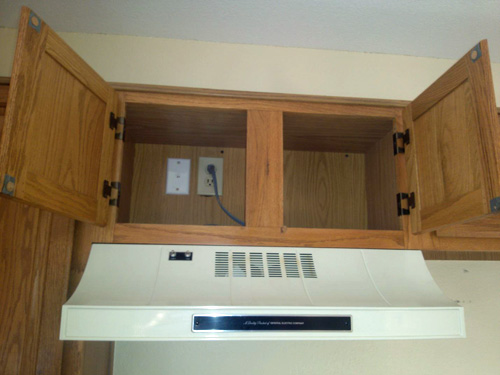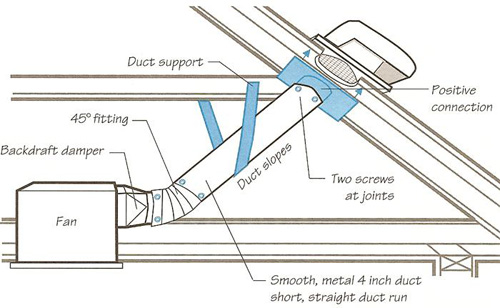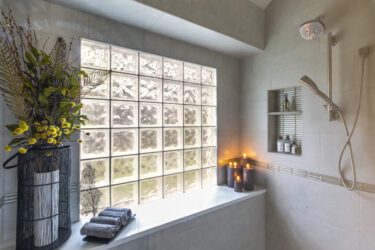There really isn’t any argument here; recirculating range hoods just don’t make any sense. The vent pulls the air from above your stove over some charcoal filled metal mesh filters, which remove only a fraction of the contaminants from the air, then blows the still-dirty air right back into your kitchen. The prolonged food smells in a home after cooking is an indicator how infective and dirty a recirculating range hood is.
A vented range hood pulls the air from above your stove and sends it outdoors via a duct system to a roof or wall vent. This safely removes things you shouldn’t be breathing, such as carbon monoxide from gas stoves, nasty gases from cooking oil, toxins from burnt food, and also removes excess moisture which harbors food smells.
When I see a client who has adapted to a recirculating range hood, it’s sad because it means they basically quit cooking, or they continue to cook and their house smells like a neighborhood grill. Here are some tips to make sure you have the right range hood for your stove:
How do you know if you have a vented hood range? Look for the duct work, and the exterior vent. If it’s missing, like in the picture above, it’s a recirculating unit, not a vented unit.
How do I know if a vented range hood will work in my situation? If you have attic above your stove, or it is on an exterior wall, a vented range hood will work. Be careful of naysayers—a lot of people want to sell you an easy-to- install vent hood, but don’t really want to crawl around in your attic. It never hurts to get two or three opinions.
What do I look for in a vent hood? The most important feature to look for in a vent hood is how many cubic feet of air per minute—or CFM—it displaces. The three things that should be considered are the size and placement of the range, how much heat you’ll be putting out, and the size of the kitchen. For a 30” electric stove in a normal size kitchen, 400 CFM is sufficient. If you have a larger stove, or a gas stove and you are prone to cook on multiple burners, or a huge kitchen, the calculations can go up to 1200 CFM pretty quick. If you aren’t sure, consult with a professional who can help make sure you get the right amount of CFM. More than enough is better, less than enough is bad—really bad.
What should be used for the ducts? Ducts should be ridged metal, going the shortest distance possible, while using 45 degree angles, not 90 degree. The ducts should vent outside through a screened vent made specifically for the application (roof, or siding, or brick) and large enough to not restrict the air movement. Never duct the air into the attic or under a house. The food particles will collect there and before you know it your house will smell and you’ll be developing your own ecosystem of bugs and rodents.
It is extremely important for your family’s health and quality of living that you vent your food cooking gases properly. Please let us know if you need assistance designing and installing a new vent system.
Mike









